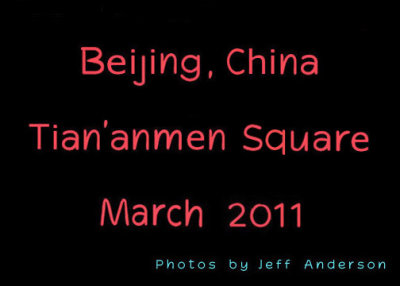
Beijing, China - Tian'anmen Square cover page. |
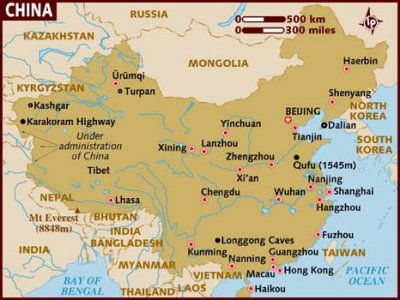
Map of China with the star indicating Beijing. |
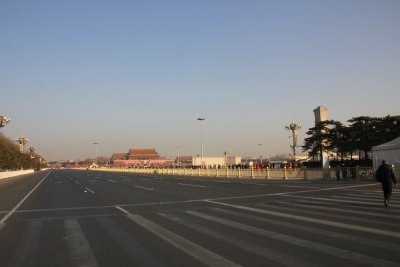
View of Tian'anmen Square from Nanchang Jie Street in Beijing. It is the largest city square in the world. |
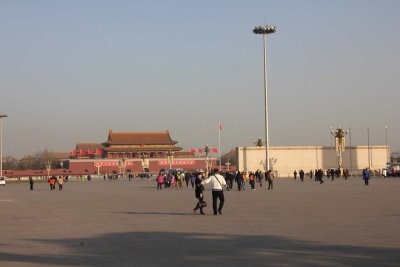
It is the symbol of modern China and featured on the emblem of the People's Republic of China. |
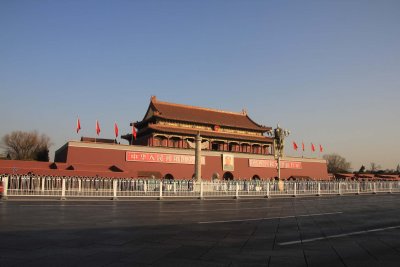
View of Tian'anmen Tower which was constructed in 1420. It sits on a platform with five archway entrances. |

The center archway was used as the passage for Ming and Qing emperors. The side ones were used for ministers and officials. |
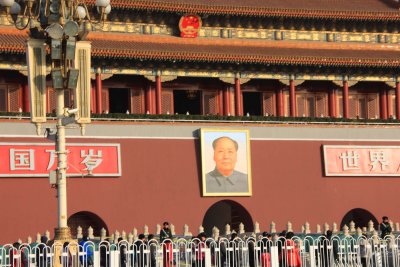
Above the center archway is a portrait of Mao Tse-tung (Mao Zedong in Chinese). |
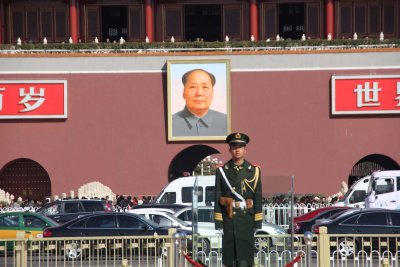
The placards next to him say: "Long Live the People's Republic of China" and "Long Live the Great Unity of the World's Peoples." |
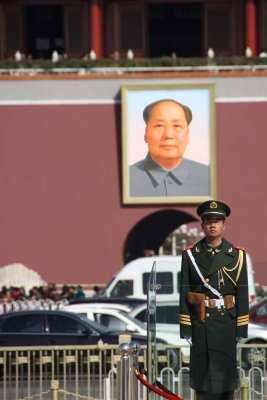
Soldier guarding the Tian'anmen Tower and Mao Tse-tung. |

Close-up of Chairman Mao. He lived from 1893 to 1976 and ruled China from from 1949 to 1976. |
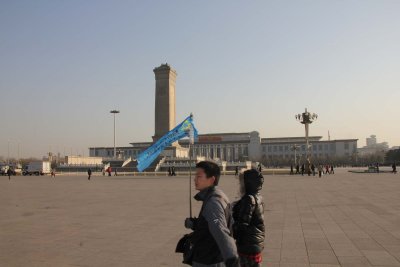
People walking across Tian'anmen Square with the Monument to the People's Heroes in the background. |

Me posing in the middle of the square in front of the Monument to the People's Heroes behind me. |
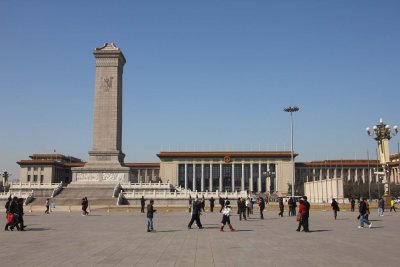
It was conceived of in 1949 and completed in 1958 to commemorate the people's heroes in modern Chinese history. |
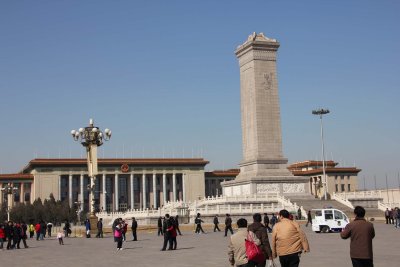
The words of Chairman Mao are inscribed into the monument reading "Eternal Glory to the People's Heroes." |

View of the Great Hall of the People where the National People's Congress is held. |
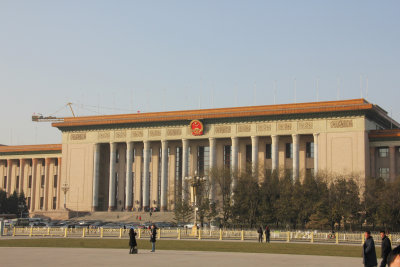
It was completed (between 1958-1959) in celebration of the 10th anniversary of the founding of People's Republic of China. |
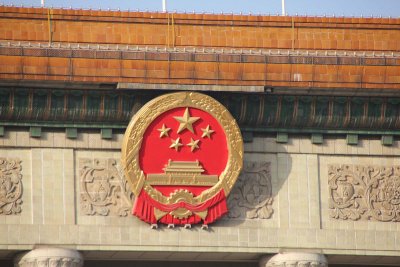
Close-up of the communist logo over the Great Hall. |
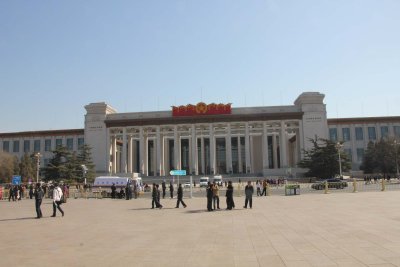
Opposite the the Great Hall is the National Museum of China. They were completed at the same time (between 1958-1959). |
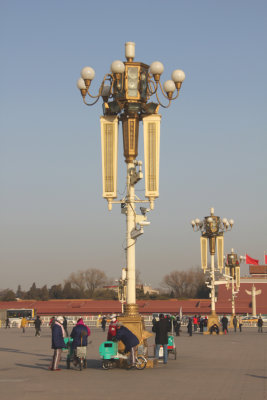
Some unusual light fixtures that adorn Tian'anmen Square. |

Police car in Tian'anmen Square keeping order. They don't want any more protests like there were in 1989. |
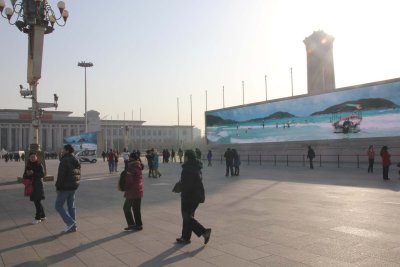
These electronic billboards in the square exemplify China's emergence as a technological force in the 21st century. |
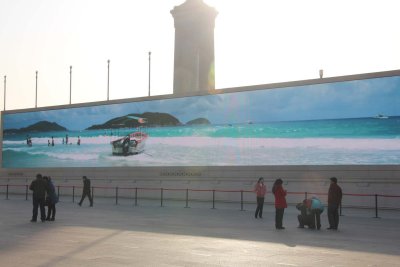
The billboards are huge, and the graphics are amazing. |
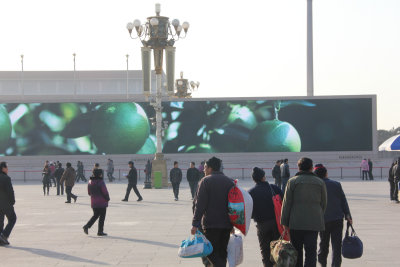
The pedestrians in the square seem oblivious to the huge images on the screen |
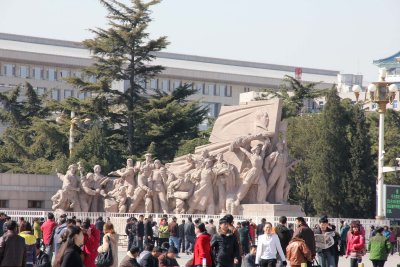
Revolutionary worker's statue which stands in front of Mao's mausoleum in Tian'anmen Square. |
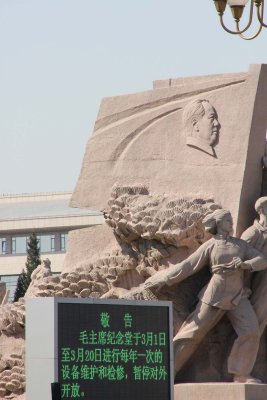
Note the carving of Mao Tse-tung on the worker's statue. |

Close-up of some of the workers. The statue is promoting socialism and the communist system of the People's Republic of China. |











